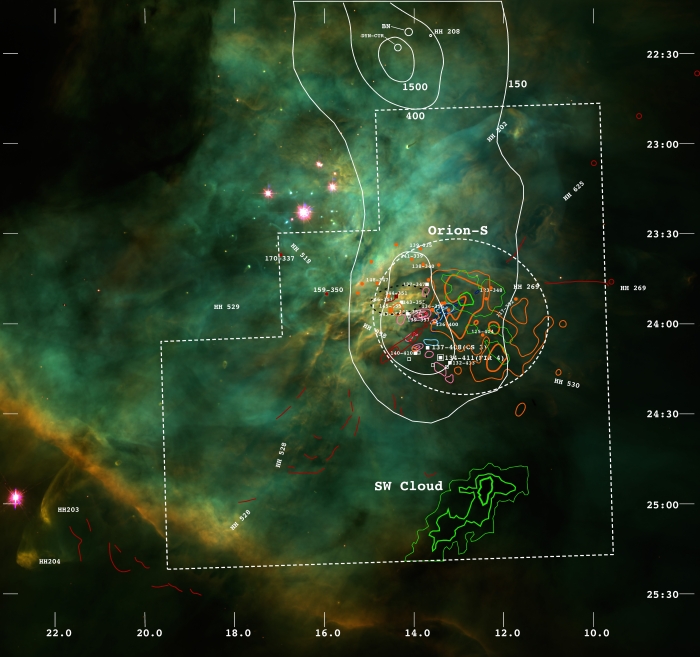| EPoS Contribution |
|
Multiple Centers of Star Formation in the Orion Nebula
C. Robert O'Dell Vanderbilt University, Nashville, Tennessee, USA | |
| As the closest star formation region that includes massive stars, the Orion Nebula attracts particular attention. We now know that there have been multiple epochs and centers for star formation there, the exact locations of the most recent three are well known. The richest is the the eponymous Orion Nebula Cluster, which is almost fully visible to study at optical wavelengths. The next is the BN-KL region, which is highly imbedded within the host Orion Molecular Cloud and is accessible only at radio and infrared wavelengths. It is now known to be the center of a dynamic disintegration event only 500-1000 years ago that also gave rise to the Allen-Burton fingers. The final center is in the Orion-South cloud, which recent work shows lies within the body of the Extended Orion Nebula, but retains a neutral molecular core. The location of this center of star formation is such that in addition to seeing the new stars in the infrared, their bipolar outflows are traced in both molecular radio emission and atomic optical jets and shocks. All of this information combines to mean that in the Orion Nebula region we have the best opportunity for studying the 3-D nature of star formation. | |
 | |
| Caption: The bright Huygens region of the Orion Nebula is the home of three centers of recent star formation, the eponymous Orion Nebula Cluster centered on the massive Trapezium stars, the highly imbedded BN-KL grouping to the northwest of the Trapezium, and the Orion-South center, which is in a molecular cloud surrounded by gas ionized by the Trapezium stars. Numerous shocks and outflows have been discovered that originate from both the BN-KL center and the Orion-South center. These provide information about the exact locations and ages of these objects. | |
| Key publication | |

